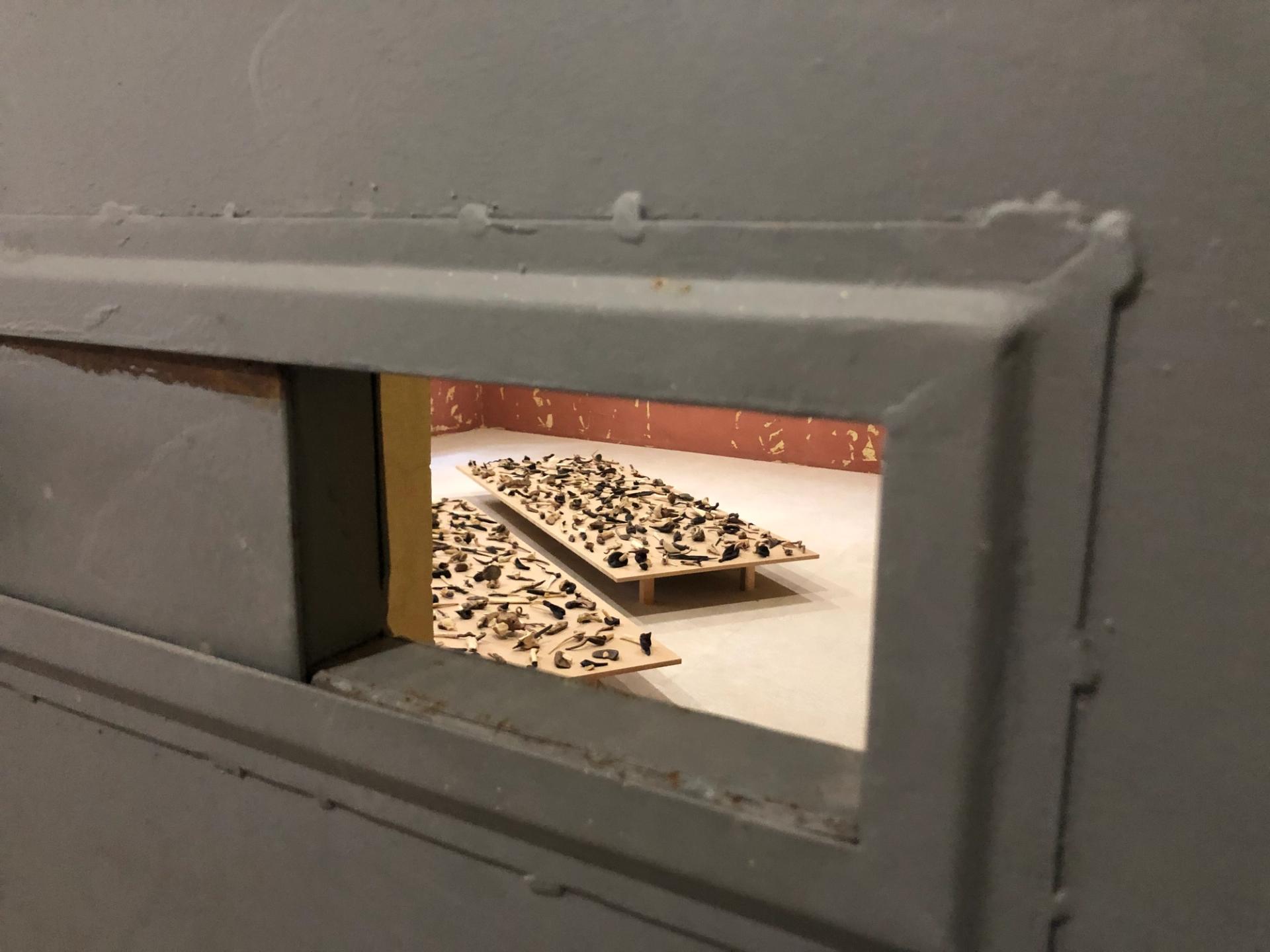A newly restored prison on Turkey’s Black Sea coast hosted the ninth edition of the international biennial Sinopale, pushing contemporary art and its production beyond the country’s cultural centre of gravity of Istanbul.
More than 30 artists collaborated with artisans and artists in Sinop, a fishing town with fewer than 70,000 residents, to make the most of the work featured in Before All Runs Out: Values of New Cosmos, providing a residency programme that is unique among art fairs in Turkey.
“Art should not be something distant but part of our everyday lives,” said Melih Görgün, Sinopale’s founder and artistic director. “Our process of collective work—creating art with a carpenter, blacksmith or craftswoman—reminds artists of practices and values they may have forgotten.”
Sacred One, installation of manipulated fabric and embroidery, Banu Uğural (2024) © Ayla Jean Yackley
What emerged is a study of the myriad ecological and social stresses Turkey faces. The artist, fashion designer and environmental activist Banu Uğural listened to the stories of traditional textile makers in Sinop before retreating to a cell at the prison to weave Sacred One. An embroidered portrait of Zehra Yıldırım, an octogenarian who had tried to prevent the destruction of a forest that was razed for a lignite mine in southern Turkey, appears on white felt. A long thread materialises from a red button at her throat to represent the life force of “women [who] in pain or war, still create a home, food and life,” Uğural said.
Across two low-slung tables, Aytekin Olgunsoy moulded dozens of small animal bones and driftwood into strange new specimens. Much of the material in Root was collected from the debris of increasingly frequent and deadly floods that inundate the Black Sea coast near his hometown.
“After the Istanbul Biennial, Sinopale is Turkey’s oldest and most important biennial in terms of the strength of its content. But its visibility is not high due to its experimental working model [and how] difficult it is to stage events of any kind outside of Istanbul,” said Melike Bayık, one of the show’s five curators that included Sinop-based HAL Kolektif.

Root, found objects, bone and wood fragments, Aytekin Olgunsoy (2019-2024) © Ayla Jean Yackley
More than 17,400 people attended the exhibition, which also occupied a former fish-packing plant and market hall, and related events before it closed on 31 October. Much of the artistic production was supported by Istanbul’s art nonprofit SAHA.
Videos by Hülya Özdemir, Ali İbrahim Öcal and Özgür Demirci occupied former dormitory wards in Sinop Prison, which opened in 1887 within a medieval fortress. Writers, intellectuals and political dissidents were among its inmates until it was closed in 1997.
Nine years later, the first Sinopale opened in the dilapidated space, helping set it on course to become a culture centre, which opened in time for this year’s biennial following a €4.5m European Union-funded restoration.
The history of Sinop, straddling an isthmus that juts into the Black Sea, spans nearly three millennia. The philosopher Diogenes the Cynic was born here, and the mythological Jason and the Argonauts are said to have made landfall during their quest for the Golden Fleece.
These days, residents are bracing for the construction of a nuclear power plant after President Recep Tayyip Erdoğan last month invited Russia to build one on the peninsula. Across the water lies Ukraine, now in its third year of war. These existential threats were not raised directly in Before All Runs Out, which largely eschewed the political landscape in a country where artistic expression can be policed.

A Mirror of Sky within the Water’s Fold, installation with mosaic applied on the ground, Suat Öğüt (2024) © Ayla Jean Yackley
One exception was the Amsterdam-based Kurdish artist Suat Öğüt’s Breath, a stirring three-channel film that follows a former tour guide at Hasankeyf, a 10,000-year-old settlement on the Tigris river that Turkey submerged in a dam project in 2020, and how “those left behind deal with their trauma to survive in the existing system,” Öğüt said.
His A Mirror of Sky Within the Water’s Fold repurposes a disused cistern on the prison grounds into a birdbath adorned with a mosaic of Sinop’s greater spotted eagle, classified as vulnerable due to habitat loss. The work references the hopes for freedom inmates often pin on the sole living creatures visible beyond prison walls, Öğütsaid.
Only after Sinopale’s opening did Öğüt learn that a fourth century mosaic depicted the eagle at the ruined Balatlar Church, in use until the early 1920s when Sinop’s Greek population was expelled during the establishment of the Turkish Republic. Such coincidences do not surprise Görgün. “Sinop’s historical layers all inform one another, and we are leaving our traces for the future,” he said.
